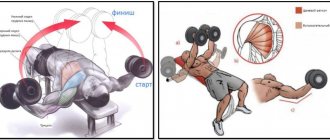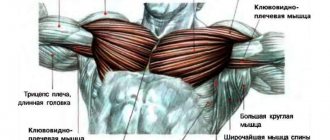Injections are not required very often. Most drugs are taken in tablet form, but in some cases their use is not available:
- the medication is not available in tablet form;
- a strong gag reflex prevents the patient from swallowing the medicine;
- in a number of emergency situations, for example, injuries, bleeding, acute pain. Through injection, the drug quickly penetrates the blood and begins to act.
Ideally, a health worker with appropriate education and practical experience should administer the injection. However, its services are not always available, so it is extremely important to know about the peculiarities of performing injections. After all, if they are placed in the wrong place, direction, without proper treatment of the puncture site and syringe, great harm can be done to the body.
How to give an injection in the buttock correctly
Giving an intramuscular injection is not difficult; mastering such a skill is very useful when the need arises to give an injection to yourself, your precious child, adult relatives, co-workers, etc. The main thing is to inject carefully, putting aside excitement and nervousness, and be careful.
It is important to know! Why and where are intramuscular injections given:
- injections into the muscle promote rapid absorption of the drug, and accordingly it begins to act faster. Due to the high concentration of blood vessels in the muscle tissue, the drug quickly penetrates the blood, mixes with its components, and is transported to its destination;
- In addition to the gluteal muscle, an intramuscular injection can be given in the arm or thigh, but in the latter two cases it is quite difficult to do everything correctly, and there is a risk of damage to nerves and bones. Therefore, without medical education, we recommend not to take risks, but to limit yourself to the “loin part”.
You should prepare certain equipment in advance:
- sterile cotton wool;
- medical alcohol;
- syringe of appropriate volume;
- the medicine itself;
- a file to help open the ampoule. As a rule, it is sold complete with medicine.
Advice! If it is not a one-time injection, but a whole course of treatment, it would be wise to put everything you need in a special bag or cosmetic bag, so as not to waste time getting ready each time.
Mandatory preparatory activities:
- The hands of the person performing the procedure must be sterile clean. It is recommended not only to wash them thoroughly, but also to wear medical gloves;
- for further disinfection, prepare 4 cotton swabs soaked in alcohol;
- Use one of the swabs to wipe the ampoule with the medicine, and carefully saw off its tip using a special file. Shake it first to raise air bubbles up. To open the ampoule, clamp its tip with a second swab. At the same time, you should not use excessive force, otherwise you may cut yourself and allow fragments to get inside the solution;
- slowly fill the syringe with medicine. Next, lift it up with the needle, gently tap it with your finger, slowly move the piston up, lifting the medicine up the syringe. After the air is completely released, a drop of medication appears at the tip of the needle.
Injection for a four-legged pet
Pets also get sick and are also prescribed a course of injections. Therefore, any cat or dog owner must learn how to give an intramuscular injection to a pet.
Sequence of steps:
- Inject the required volume of the drug into a sterile syringe and release the air.
- We place the pet on its side, fix it with the knee and slightly massage the femoral muscle on the hind leg.
- We insert the needle parallel to the thigh at an acute angle. It should sink about 1 cm.
- Slowly inject the medicine.
The main thing is to overcome cowardice and uncertainty, carefully study the instructions and practice in advance, for example, on your favorite soft toy.
Oil injection in the buttock
Many people are interested in why oil injections are harder to do. It's all about the denser consistency of such a solution. You will need a thicker needle, and before taking the drug, you need to warm it up to body temperature by holding it in your hand.
After inserting the needle, you should slightly pull the piston towards you; if the blood is not drawn in, it means that the vessels are not affected. Otherwise, you can cause a drug embolism, poor nutrition, and tissue death at the injection site. The consequences in this case can only be eliminated in the hospital.
Important! When introducing an oil solution, make sure that it does not get into the blood.
Selection of needle and syringe
The era of using and sterilizing reusable syringes is gone forever. Modern instruments for intramuscular injections are disposable.
An injection into the buttock requires a needle up to 60mm. Its minimum length is 40mm. The cross-section of the needles should not exceed 1 mm.
When choosing a needle, it is worth considering the base of the medicine: oil solutions require thicker needles than water solutions. To determine the length, you need a visual assessment of the thickness of the fat layer under the patient’s skin. The larger it is, the longer the needle should be.
The volume should correspond to the dose of the drug per administration. If you need to inject 4 ml of solution at a time, you will need a 5 mm syringe.
In order not to make a mistake with the amount of medicinal solution, it is worth calculating what the difference between the divisions on the cylinder scale equals. To do this, the number closest to the needle cone is divided by the number of divisions between the two numbers on the syringe barrel. For example, the number closest to the needle is 2, and the divisions are 4. 2:4 = 0.5 ml.
Where to give an injection in the buttock
A person who is forced to give an intramuscular injection for the first time must clearly understand that it is necessary to inject only in the correct place. Otherwise, due to your inexperience, you can simply injure the person who trusted you.
To determine which part of the buttock should be injected, visually divide it into 4 parts. At first, the injection area can even be marked with iodine.
The diagram below shows which area the injections are placed in. It is forbidden to do this in the two lower squares; the first upper one, due to its proximity to the spine, also belongs to the zones where you cannot stab.
By the method of elimination, we are left with the only area where injections need to be given - the upper outer square. It lacks large blood vessels, not many nerve endings and closely spaced bones. Plus, it is in this area that the risk of hitting the sciatic nerve is minimal.
It is also important to know not only where to do, but also how to perform this action. For example, when injections of meloxicam or diclofenac (popular painkillers) are given, they should be administered as deeply as possible to quickly enter the bloodstream.
Choosing a syringe
Before injecting into the buttock, it is important to understand what size the syringe should be, as well as what volume of medicine you will need.
To inject yourself into the buttock, doctors advise purchasing two-cube syringes with a thin needle, since it is easier to administer the drug with such a syringe.
Before injecting yourself into the buttock, you will need to lay out additional needles and selected syringes.
Other items are taken out of a sterile package, and the needle is covered with a plastic cap.
The ampoule is treated with an alcohol-based product and opened. The needle is lowered into the ampoule case, and the amount of product recommended by the doctor is drawn in. Air trapped inside is released.
Before injecting into the buttock, we thoroughly wash our hands and then apply an alcohol-containing liquid or antiseptic to them. This will have to be done before each injection.
If there is bleeding, you need to deepen the needle. If you see drops of blood appearing, then most likely the vessel has been damaged.
Gloves should also be treated with alcohol or antiseptic.
It is possible to give an injection while standing in the buttock, or while lying down on a hard mattress on your side. Usually a person who already has relevant experience performs the procedure while standing.
If you have never done this procedure yourself before, then you should choose a lying position, sitting comfortably on a medium-hard bed.
It is impossible to make several injections at once with one needle, since this can allow pathogenic organisms to penetrate into the tissue. It is recommended to use different disposable syringes each time.
- The syringe must match the volume of the substance injected.
- Syringes for intramuscular injections together with a needle have a size of 8-10 cm.
- The volume of the medicinal solution should not exceed 10 ml.
- Tip: choose syringes with a needle of at least 5 cm, this will reduce pain and reduce the risk of lumps forming after the injection.
Buttock injection technique
Many experienced nurses pride themselves on having an intuitive understanding of what angle to give injections and how deep (how far to insert the needle) to deliver medication painlessly. Such skills come with age; correct hand positioning is the result of extensive practical experience.
The following rules will tell you how to insert a needle correctly:
- the patient must take a lying position. However, in emergency situations, injections can be administered intramuscularly and while standing;
- Before inserting the needle, you should examine (lightly palpate) the buttock for any lumps formed as a result of previous injections. If you inject into such a place, the sensations will be very unpleasant and painful, and the medication will take a long time to disperse through the tissues. You will learn how to relax the buttock before an injection to reduce the pain of the sensation by reading the article to the end;
- After disinfecting the injection site, let it dry completely;
- limit the injection site by placing your hand on the buttock. The input should be done quickly but deeply. It is extremely important here how far to insert the needle. The depth should be such that the base of the needle does not reach the skin by only a few millimeters;
- Pull the syringe plunger slightly towards you to check whether the vessel is touched and whether blood is drawn into the syringe. Otherwise, it is necessary to place the injection in another place;
- The drug is administered by pressing on the piston. This is done very slowly, otherwise the tissues may separate and a hematoma may form, which will take a very long time to resolve.
- After removing the needle, the injection site is treated with a cotton swab soaked in alcohol. Note that the length of the needle should not be too short, otherwise the medicine will not enter the muscle, but will simply be injected under the skin.
Distracting the patient helps to reduce the pain; experienced nurses will tell you how to give an injection in the buttock with a slap. This process consists of the fact that before the injection, the buttock should be slapped, and then only injected.
Photos of intramuscular injections
Intramuscular injection (injection) is a parenteral method of administering a drug, previously converted into a solution, by injecting it into the thickness of the muscle structures with a needle. All injections are classified into 2 main types - intramuscular and intravenous.
If injections for intravenous administration must be entrusted to professionals, then intramuscular administration can be carried out both in the hospital and at home. Intramuscular injection can also be practiced by people who are far from medicine, including teenagers, if constant injection treatment is necessary.
The following anatomical zones are suitable for injection:
- gluteal region (upper square);
- thigh (outer side);
- shoulder area.
Administration to the femoral region is preferable, but the choice of injection site depends on the nature of the drug. Antibacterial drugs are traditionally placed in the gluteal region due to high pain.
Before the injection is administered, the patient needs to relax as much as possible, sit comfortably on a couch, sofa, table. Conditions must be conducive to the administration of the drug.
If a person injects himself independently, the muscles of the injection area should be relaxed while the arm is tense.
Intramuscular injections are the best alternative to oral medications due to the rapidity of action of the active substance and minimizing the risk of side effects from the gastrointestinal tract.
Parenteral administration significantly reduces the risks of allergic reactions and drug intolerance.
The rate of maximum concentration of drugs for intramuscular injection is slightly lower than for drugs for infusion (intravenous) administration, but not all drugs are intended for administration through venous access. This is due to the possibility of damage to the venous walls and a decrease in the activity of the medicinal substance. Aqueous and oily solutions and suspensions can be administered intramuscularly.
The advantages of drugs for intramuscular administration are the following:
- the possibility of introducing solutions of different structures;
- the possibility of introducing depot preparations for better transport of the active substance, to provide a prolonged result;
- rapid entry into the blood;
- introduction of substances with pronounced irritating properties.
The disadvantages include the difficulty of self-injection into the gluteal region, the risk of nerve damage when inserting a needle, and the danger of getting into a blood vessel with complex medicinal compositions.
Some drugs are not administered intramuscularly. Thus, calcium chloride can provoke necrotic tissue changes in the area of needle insertion, inflammatory foci of varying depth. Certain knowledge will allow you to avoid unpleasant consequences from improper administration of injections in violation of technology or safety rules.
The main causes of complications after erroneous administration are considered to be various violations of the technique of administering injection drugs and non-compliance with the antiseptic treatment regimen. The consequences of errors are the following reactions:
- embolic reactions, when a needle with an oil solution penetrates the wall of a vessel;
- the formation of infiltration and compaction due to non-compliance with the aseptic regime and constant administration in the same place;
- abscess due to infection of the injection site;
- nerve damage due to incorrect choice of injection site;
- atypical allergic reactions.
To reduce the risk of side effects, you should relax the muscle as much as possible. This will avoid breaking thin needles when administering the drug. Before administration, you need to know the rules for the injection procedure.
Before insertion, the area of intended insertion must be inspected for integrity. It is contraindicated to inject into an area with visible skin lesions, especially those of a pustular nature.
The area should be palpated for the presence of tubercles and compactions. The skin should come together well without causing pain. Before administration, the skin is folded and the drug is injected.
This manipulation helps to safely administer the drug to children, adults and malnourished patients.
To streamline the procedure, everything you need should be at hand. Also, a place for treatment must be equipped. If multiple injections are necessary, a separate room or corner for administering the injection is suitable. Giving an injection requires preparation of the site, the working area and the injection site on the human body. To carry out the procedure you will need the following items:
- medicinal solution or dry substance in an ampoule;
- three-component syringe with a volume of 2.5 to 5 ml (according to the dosage of the drug);
- cotton balls soaked in an alcohol solution;
- ampoules with saline solution and other solvent (if necessary, introducing powder).
Before the injection, you should check the integrity of the drug packaging, as well as the ease of opening the container. This will allow you to avoid unforeseen factors when giving an injection, especially when it comes to young children.
To prepare, you should use the following step-by-step algorithm:
- the workplace must be clean, the paraphernalia must be covered with a clean cotton towel;
- the integrity of the ampoule must not be compromised, the expiration dates and storage conditions of the medicine must be observed;
- The ampoule should be shaken before administration (unless otherwise indicated in the instructions);
- the tip of the ampoule is treated with alcohol, filed or broken;
- After taking the medicine, it is tedious to release excess air from the syringe container.
The patient should be in a supine position, which reduces the risk of spontaneous muscle contraction and needle fracture. Relaxation reduces pain, risks of injury and unpleasant consequences after insertion.
Administration of the drug
After selecting a location, the area is cleared of clothing, palpated and treated with an antiseptic.
When inserting into the gluteal region, it is necessary to press your left hand to the buttock so that the area of intended insertion is between the index and thumb. This allows the skin to be fixed.
With your left hand, slightly stretch the skin at the injection site. The injection is made with sharp, confident movements with a slight swing. For painless insertion, the needle should enter 3/4 of the length.
After insertion, the syringe is intercepted with the left hand to securely fix it, and the piston is pressed with the right hand and the medicine is gradually injected. If you inject too quickly, a lump may form.
After completion, alcoholized cotton wool is applied to the injection area, after which the needle is removed. The injection site should be massaged with an alcohol-soaked cotton ball to prevent the formation of a lump.
If the injection is given to a child, it is better to prepare a small syringe with a small and thin needle. Before conducting, it is recommended to grab the skin into a fold along with the muscle. Before injecting yourself, you should practice in front of a mirror to choose the optimal position.
Insertion into the buttock is considered the traditional injection site. To correctly determine the area of intended injection, the buttock is conventionally divided into a square and the upper right or upper left is selected. These areas are safe from accidental needle or drug entry into the sciatic nerve. You can define the zone differently. You need to step back down from the protruding pelvic bones. This will not be difficult for slender patients.
Intramuscular injections can be water or oil. When injecting an oil solution, the needle must be inserted carefully so as not to damage the blood vessels. Drugs for administration should be at room temperature (unless otherwise indicated). This way the medicine disperses throughout the body faster and is easier to administer.
When injecting an oil preparation, after inserting the needle, the piston is pulled towards itself. If there is no blood, the procedure is completed painlessly. If blood appears in the syringe reservoir, you should slightly change the depth or angle of the needle.
In some cases, it is necessary to replace the needle and try again to inject.
Before inserting a needle into the buttock, you should practice yourself in front of a mirror, completely relax during the manipulation.
The following step-by-step instructions should be followed:
- inspect the ampoule for integrity and expiration dates;
- shake the contents so that the medicine is evenly distributed throughout the ampoule;
- treat the intended injection site with alcohol;
- remove the protective cap from the needle and the drug;
- inject the medicine into the syringe reservoir;
- gather the skin into a fold and press the buttock with your left hand so that the injection area is between the index and thumb;
- administer the drug;
- apply alcohol-soaked cotton wool and pull out the needle;
- massage the injection area.
The alcohol cotton wool should be thrown away 10-20 minutes after the injection. If the injection is given to a small child, you should seek the help of third parties to immobilize the baby. Any sudden movement during injection can lead to a broken needle and increased pain from the injection of the drug.
In the thigh
The insertion zone into the thigh is the vastus lateralis muscle. Unlike insertion into the gluteal muscle, the syringe is inserted with two fingers of one hand using the principle of holding a pencil. This measure prevents the needle from entering the periosteum or sciatic nerve structure. To carry out the manipulation, the following rules must be observed:
- muscles should be relaxed:
- patient's posture - sitting with knees bent;
- palpating the area of intended injection;
- antiseptic surface treatment;
- insertion and fixation of the syringe;
- injection of a medicinal product;
- clamp the insertion area with a cotton ball soaked in alcohol;
- massaging the injection area.
If there is a significant amount of subcutaneous fat in the thigh area, it is recommended to take a needle of at least 6 mm. When administering the drug to children or debilitated patients, the injection area is formed in the form of a fold, which necessarily includes the lateral muscle. This will ensure that the drug reaches the muscle and reduce the pain of the injection.
In the shoulder
Administration into the shoulder is due to difficult penetration and absorption of the drug during subcutaneous administration. Also, localization is chosen if the injection is painful and difficult to tolerate by children and adults.
The injection is placed in the deltoid muscle of the shoulder, provided that other areas are inaccessible for manipulation or several injections are required.
How to give an injection painlessly
Making an injection painlessly and safely is a real art; in addition to the described “slap” method, there are several more secrets:
- It will not hurt to give the injection by sharply inserting the needle strictly perpendicular to the injection site. The medication is administered slowly and smoothly;
- the needle is also taken out perpendicularly, the injection site is first pressed with cotton wool soaked in alcohol.
Learning to give injections is not difficult, but there is also a psychological barrier. How to stop being afraid to give injections? The surest way is to carry out this procedure on yourself.
General recommendations
Doctors give some tips to help newcomers who decide to give an injection to their loved one:
- If the patient has increased sensitivity to pain, then the medicine should be administered very slowly, and the skin should be pierced with a needle quickly. But in any case, the procedure will not be painless;
- No need to neglect disinfection. It is better to wipe the buttock or instruments with an antiseptic once again than to overlook it and introduce an infection into the wound;
- When changing a needle, the cap of the new one is removed only after it is put on the syringe;
- Chicken fillet or an orange will help you practice giving injections in the buttock. Using these products, you can practice the force of needle insertion and the process of introducing medication into the muscle;
- If the syringe needle comes into contact with clothing or other non-sterile object after removing the cap, it should be replaced with another one;
- The remains of the ampoule, syringe with needle, cotton wool and other debris must be carefully wrapped in a bag and disposed of.
We suggest you familiarize yourself with Injections for inflammation of the genitourinary system and inflammation
Important!
Children cannot be given injections without medical education. The medicine is administered into the baby's buttock by a pediatrician or a nurse who is called to the home.
How to give an injection in the buttock at home
You can give an injection intramuscularly yourself, without involving strangers. The question of whether this can be learned worries many, because such a skill is extremely valuable in emergency situations.
Experts say that with proper skill, everything is possible, but such skills should be used only as an emergency measure, because it is not always possible to carry out the “execution” correctly on yourself. Injecting in this position is not only inconvenient, but also fraught with consequences:
- poor quality treatment of the injection site;
- incomplete needle insertion;
- entering a vessel;
- needle deformation due to muscle tension.
Let us note that not every experienced nurse can inject herself; in this situation, a psychological barrier also plays a role.











